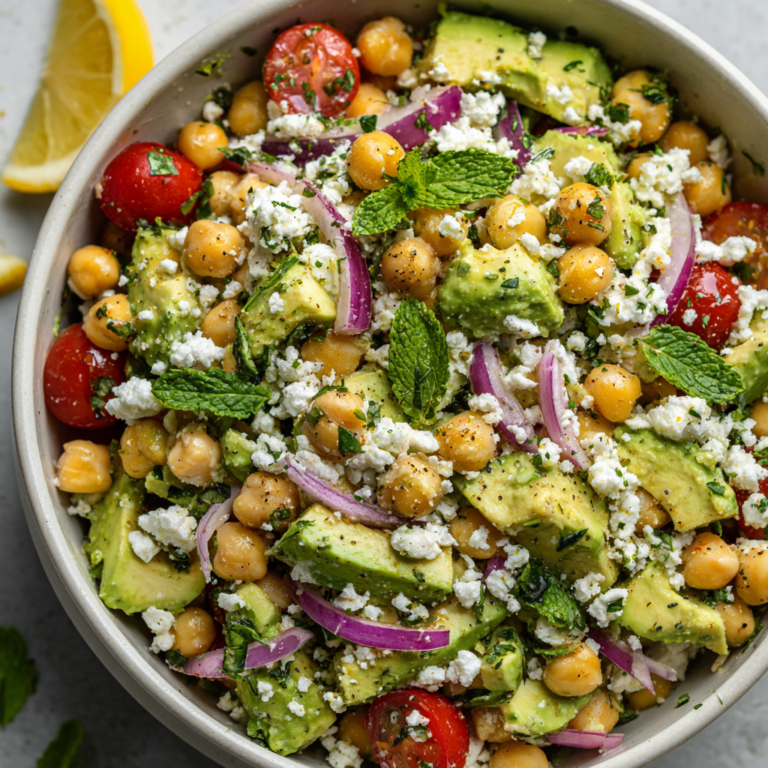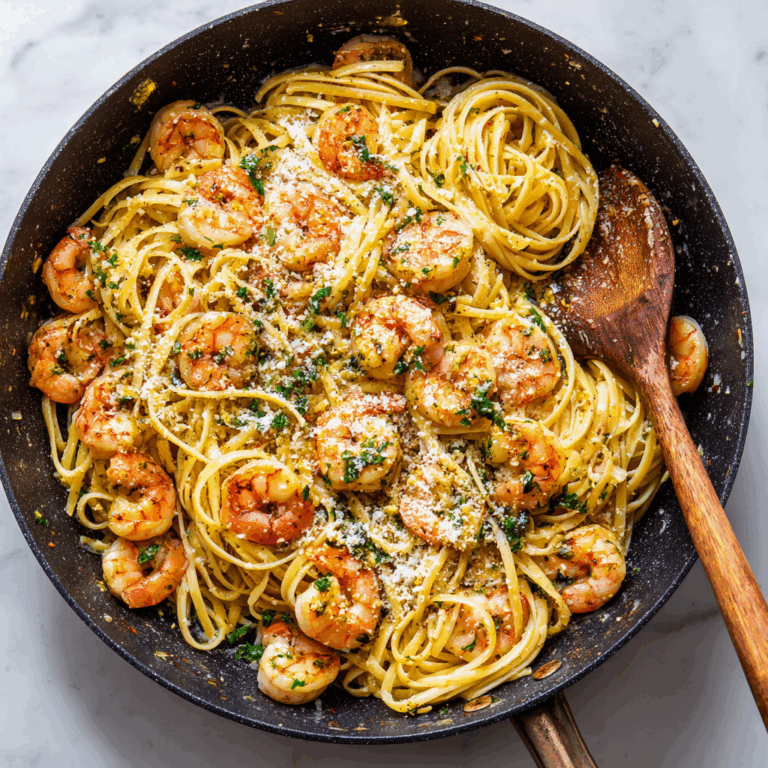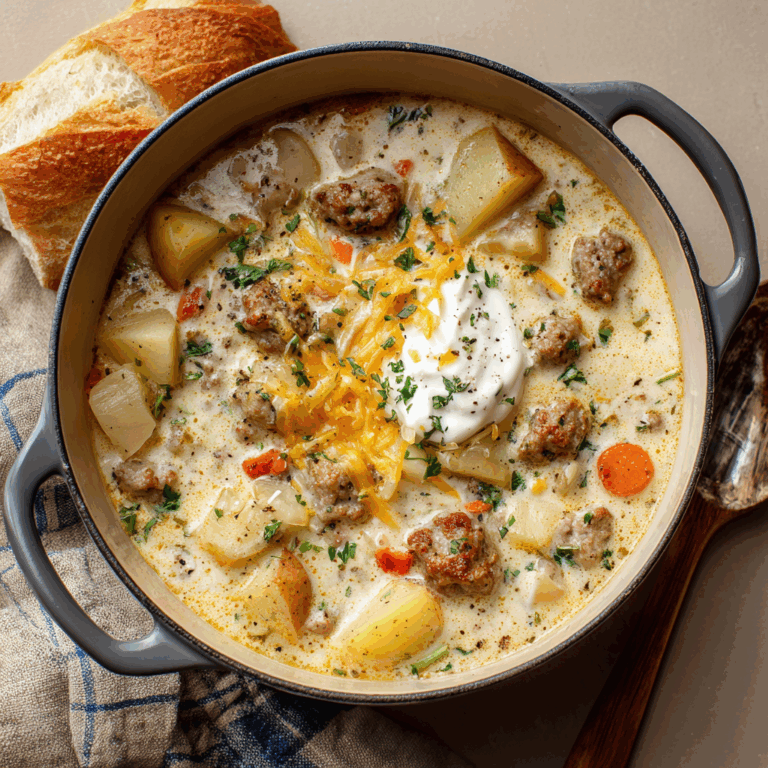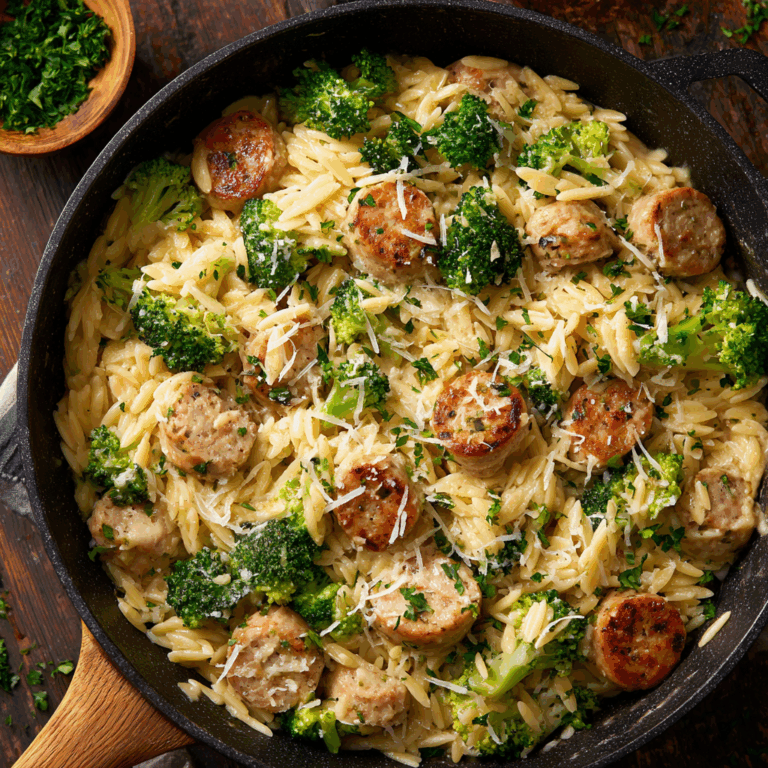The Ultimate Autumn Comfort: A Deep Dive into Creamy Butternut Squash Gnocchi with Sausage, Thyme, and Sage
There’s a certain magic that happens in the kitchen when autumn arrives. The air turns crisp, the leaves blaze with color, and our culinary desires shift from light, summery fare to dishes that offer warmth, richness, and profound comfort. It is in this transitional season that a truly spectacular recipe shines: Creamy Butternut Squash Gnocchi with Sausage, Thyme, and Sage. This isn’t just a meal; it’s an experience, a hug in a bowl that masterfully balances sweet, savory, and earthy flavors in a way that feels both rustic and elegantly sophisticated.
The very name, Creamy Butternut Squash Gnocchi with Sausage, Thyme, and Sage, evokes a sense of harvest bounty. It promises the sweet, nutty depth of squash, the hearty, savory punch of sausage, and the aromatic, woodsy fragrance of two of autumn’s most beloved herbs. What makes this dish truly exceptional, beyond its incredible flavor profile, is its stunning practicality. This one-pan wonder can be on your table in about 40 minutes, making it a feasible weeknight dinner that doesn’t sacrifice an ounce of grandeur for a special occasion.
In this extensive guide, we will explore every facet of creating the perfect Creamy Butternut Squash Gnocchi with Sausage, Thyme, and Sage. We’ll go far beyond the simple recipe, delving into the history of its components, the science behind its techniques, and countless variations to make it your own. Prepare to become an expert on this quintessential autumn dish.
Why This Recipe Works: The Symphony of Flavors
Before we even pick up a knife, it’s worth understanding why the combination of ingredients in Creamy Butternut Squash Gnocchi with Sausage, Thyme, and Sage is so phenomenally successful. It’s a classic case of culinary synergy, where the whole is greater than the sum of its parts.
-
The Sweetness of Butternut Squash: Butternut squash, when roasted and pureed, develops a deep, caramelized sweetness. This natural sugar provides a beautiful counterpoint to the saltiness of the sausage and the richness of the cream. It also gives the sauce its signature vibrant, sunny color and velvety texture without needing excessive amounts of thickener.
-
The Savory Uplift of Sausage: Italian sausage (whether sweet or spicy) brings a powerful umami flavor to the dish. The fat rendered from the sausage becomes the cooking medium, infusing the entire sauce with a meaty, savory depth that prevents the squash from being cloying. The texture of the browned sausage slices adds a satisfying bite.
-
The Earthy Aroma of Herbs: Thyme and Sage: These are the quintessential herbs of autumn. Sage, with its slightly peppery, camphorous notes, is a classic pairing with both squash and pork. When it hits the hot pan, its aroma blossoms. Thyme offers a more subtle, earthy, and slightly floral backbone that ties the sweet and savory elements together seamlessly.
-
The Pillowy Comfort of Gnocchi: Potato gnocchi are little dumplings of comfort. They are soft, pillowy, and act as the perfect vehicle for the luxurious sauce. Because they cook directly in the sauce, they absorb all the wonderful flavors, becoming little pockets of delight.
-
The Luxurious Base: Cream and Broth: The combination of heavy cream and chicken broth creates a sauce that is rich but not overly heavy. The broth adds a savory complexity that lightens the dish slightly, while the cream provides the unctuous, silky mouthfeel that defines comfort food.
This harmonious balance is what makes every bite of Creamy Butternut Squash Gnocchi with Sausage, Thyme, and Sage a complex and satisfying event.
Deconstructing the Ingredients: A Guide to Quality
The simplicity of this recipe means the quality of each ingredient is paramount. Let’s break down each component with an eye toward selecting the best possible versions for an unforgettable result.
1. The Star: Butternut Squash Puree
The foundation of our sauce is the butternut squash puree. You have two primary options here, and the choice will impact the final flavor.
-
Option A: Homemade Roasted Butternut Squash Puree (Highly Recommended)
-
Why it’s better: Roasting a whole butternut squash concentrates its sugars, resulting in a deeper, sweeter, and more complex flavor compared to canned puree. You have complete control over the texture and seasoning.
-
How to do it: Preheat your oven to 400°F (200°C). Carefully slice a medium (2-3 lb) butternut squash in half lengthwise. Scoop out the seeds and stringy pulp. Drizzle the cut sides with a little olive oil and sprinkle with salt and pepper. Place cut-side down on a parchment-lined baking sheet and roast for 45-60 minutes, or until the flesh is very tender and easily pierced with a fork. Let it cool until manageable, then scoop the flesh into a food processor or blender and blend until completely smooth. This will yield about 3-4 cups of puree—plenty for this recipe and more to freeze for later.
-
Pro Tip: For an even richer flavor, you can roast the squash halves cut-side up and add a few pats of butter and a sprinkle of brown sugar to the cavity before roasting.
-
-
Option B: Canned Butternut Squash Puree
-
When to use it: This is a fantastic time-saver and a perfectly acceptable substitute for a busy weeknight. It offers consistency and convenience.
-
What to look for: Read the label carefully! You want 100% pure butternut squash puree, not pumpkin pie filling, which contains sugar and spices. The ingredient list should have one item: butternut squash.
-
2. The Hearty Element: Italian Sausage
The sausage is the primary source of savory flavor and fat in the dish.
-
Type: You can use either sweet (mild) Italian sausage or hot Italian sausage. The choice depends entirely on your preference for heat. Hot sausage will add a lovely, gentle spice that cuts through the richness of the cream.
-
Form: The recipe calls for links with casings removed. You can also often find “Italian sausage meat” sold in bulk without casings, which saves a step. If using links, simply slice through the casing lengthwise and peel it away.
-
Quality: Seek out sausage from a local butcher if possible, as it often has a higher meat content and better seasoning. However, high-quality supermarket brands work perfectly well.
3. The Pillowy Clouds: Potato Gnocchi
Gnocchi can be found in the pasta aisle of most grocery stores.
-
Shelf-Stable vs. Refrigerated/Frozen: You can use any type of potato gnocchi. Shelf-stable packages are convenient and have a long pantry life. Refrigerated or frozen gnocchi are often a bit fresher and can have a slightly better texture, but the difference is minimal in a saucy dish like this.
-
Homemade Gnocchi: If you’re feeling ambitious, making gnocchi from scratch is a rewarding process. It involves ricing baked potatoes, mixing with flour, and shaping the dough. While wonderful, it significantly adds to the prep time, so for the purpose of our 40-minute goal, store-bought is ideal.
4. The Aromatic Soul: Fresh Herbs (Thyme and Sage)
This is non-negotiable. For the brightest, most authentic flavor, fresh thyme and sage are essential.
-
Why Fresh? Dried herbs have a more concentrated, sometimes dusty flavor and lack the vibrant, aromatic oils of their fresh counterparts. The fresh sage, in particular, provides a fragrance that is irreplaceable.
-
Preparing the Herbs: For sage, simply pluck the leaves from the tough central stem and chop them finely. For thyme, the leaves are tiny and attached to thin, woody stems. The easiest way to remove them is to hold the top of the stem and run your fingers down it, against the direction of the leaves. They should easily strip off.
5. The Saucy Components: Heavy Cream and Chicken Broth
-
Heavy Cream: Also sold as heavy whipping cream, this has a high fat content (36-40%), which is necessary for creating a luxuriously thick sauce that won’t curdle or break easily. Do not substitute with half-and-half or milk, as they will not provide the same richness and may separate.
-
Chicken Broth: Use a low-sodium broth. This is crucial because the sausage will release a significant amount of salt into the pan. Using low-sodium broth gives you control over the final seasoning, preventing the dish from becoming too salty.
6. The Flavor Enhancers: Garlic, Olive Oil, Salt, and Pepper
-
Garlic: Freshly minced garlic is always best. The pre-minced jarred garlic can have a slightly off, acidic flavor.
-
Olive Oil: A good extra-virgin olive oil is perfect for browning the sausage.
-
Salt and Pepper: Use kosher salt for cooking and freshly ground black pepper. Coarsely ground black pepper adds a wonderful texture and bursts of flavor.
The Recipe: Creamy Butternut Squash Gnocchi with Sausage, Thyme, and Sage
Here is the detailed, step-by-step recipe, designed to guide you to perfection.
Yield: 4 servings
Prep Time: 20 minutes
Cook Time: 20 minutes
Total Time: 40 minutes
Ingredients
-
12 oz Italian sausage (sweet or hot), casings removed (about 3 links)
-
1 tablespoon olive oil
-
10 oz potato gnocchi (uncooked)
-
1 cup heavy cream
-
½ cup low-sodium chicken broth
-
1 cup butternut squash puree (homemade or canned)
-
3 cloves garlic, minced
-
2 tablespoons fresh sage, chopped (divided)
-
2 tablespoons fresh thyme leaves (divided)
-
Salt and coarsely ground black pepper, to taste
Instructions
Step 1: Prepare the Sausage
Remove the sausage from its casings if using links. You can simply slice it into ½-inch thick rounds, or for more surface area to brown, you can break it up into smaller, rustic chunks with your fingers. This is a matter of personal preference; slices will hold their shape, while chunks will integrate more into the sauce.
Step 2: Brown the Sausage to Perfection
Heat 1 tablespoon of olive oil in a large, high-sided skillet (a 12-inch skillet is ideal) over medium heat. Once the oil shimmers, add the sausage in a single layer. Here’s a key tip for achieving a beautiful brown crust: do not move the sausage for the first 3-4 minutes. Allow it to sear and develop a deep, caramelized color on one side. This browning, known as the Maillard reaction, is where immense flavor is created.
After 3-4 minutes, flip the sausage slices and cook for another 2-3 minutes on the other side. The sausage does not need to be cooked all the way through at this point, as it will continue to cook in the sauce. The goal here is to achieve a good sear and render out some of the fat. Using a slotted spoon, you can remove the sausage and set it aside on a plate if there is an excessive amount of fat in the pan, but usually, the rendered fat is perfect for the next step.
Step 3: Cook the Gnocchi in the Sauce
To the same skillet with the sausage (and its rendered fat), add the uncooked potato gnocchi, heavy cream, and chicken stock. Stir everything well to combine, scraping up any browned bits (the “fond”) from the bottom of the pan. These bits are packed with flavor.
Bring the liquid to a gentle boil over medium heat. Once boiling, reduce the heat to a simmer, cover the skillet with a lid, and let it cook for about 5 minutes. The gnocchi will cook through in the simmering liquid, becoming tender and pillowy. Cooking the gnocchi directly in the sauce allows them to absorb the flavors beautifully, rather than just being coated at the end.
Step 4: Create the Creamy Butternut Squash Sauce
After 5 minutes, the gnocchi should be tender. Now, add the butternut squash puree and the minced garlic to the skillet. Stir vigorously until the puree is fully incorporated into the cream and broth, creating a smooth, orange-hued sauce.
Bring the sauce back to a simmer over medium heat, then reduce the heat to low-medium. Allow it to cook, uncovered, for about 3-5 minutes, stirring occasionally. This step allows the raw taste of the garlic to cook out and lets the sauce thicken slightly as some of the liquid evaporates. The sauce will continue to thicken as it cools. If you prefer an even thicker sauce, simply let it simmer for a few minutes longer.
Step 5: The Final Flourish of Herbs and Seasoning
Return the browned sausage to the pan if you had set it aside, and stir to combine. Now, remove the skillet from the heat. Stir in half of the chopped fresh sage and half of the fresh thyme leaves. The residual heat will wilt the herbs perfectly and release their aromatic oils.
Now, taste the sauce! This is the most important step. Season with salt and freshly ground black pepper to your liking. Be cautious with the salt: the sausage and chicken broth have already contributed a fair amount. It’s always better to start with a little and add more if needed.
Step 6: Serve and Garnish
Divide the Creamy Butternut Squash Gnocchi with Sausage, Thyme, and Sage among four warm bowls. Garnish generously with the remaining fresh sage and thyme. This not only adds a final burst of fresh herb flavor but also makes the dish look restaurant-quality.
Notes
-
Make-Ahead Squash Puree: The total time of 40 minutes assumes you have butternut squash puree ready to go. Roasting the squash and making the puree can be done days in advance. Store it in an airtight container in the refrigerator for up to 4 days or freeze it for up to 3 months.
-
Herb Substitution (Last Resort): If you absolutely must use dried herbs, reduce the amount significantly. Use ½ teaspoon of dried thyme (not powdered) or ¼ teaspoon of powdered dried thyme. For sage, use about 1 teaspoon of dried rubbed sage. Remember, the flavor will be different and less vibrant.
-
Deglazing: If the bottom of your pan ever looks like it’s getting too dark during cooking, add a splash of the chicken broth and use a wooden spoon to scrape the bits up. This is called deglazing and it only adds more flavor.
The Science of the Sauce: Why This Method Works
You might wonder why we add the ingredients in this specific order. There’s a method to the madness that ensures the best texture and flavor integration.
-
Browning the Sausage First: Searing the sausage first creates a flavor foundation in the pan (the fond) and renders fat that becomes the cooking medium for the rest of the dish. Doing this after adding other wet ingredients would steam the sausage instead of browning it.
-
Cooking Gnocchi in the Liquid: By adding the gnocchi to the simmering cream and broth, we accomplish two things. First, we cook the gnocchi through. Second, and more importantly, the gnocchi releases starch into the sauce as it cooks. This starch acts as a natural thickener, helping the sauce cling to the gnocchi and giving it a better body.
-
Adding Squash Puree Later: Butternut squash puree is already cooked. If we added it at the beginning with the cream, it might break down too much or the sugars could scorch. Adding it towards the end preserves its fresh, sweet flavor and vibrant color.
-
Adding Fresh Herbs Off the Heat: The volatile oils in fresh herbs are delicate and can be destroyed by prolonged high heat. By stirring half of them in at the very end, we preserve their bright, aromatic character. The garnish of raw herbs provides an additional fresh punch.
Customizing Your Creamy Butternut Squash Gnocchi
The beauty of this Creamy Butternut Squash Gnocchi with Sausage, Thyme, and Sage recipe is its adaptability. Here are some ways to make it your own:
-
Vegetarian/Vegan Version: Omit the sausage. Use a plant-based sausage alternative, or add hearty vegetables like sliced mushrooms or chopped kale when you would have added the sausage. For the sauce, substitute the heavy cream with full-fat coconut milk or cashew cream, and use vegetable broth. The richness from coconut milk pairs wonderfully with the squash.
-
Lighter Version: Substitute the heavy cream with half-and-half or even whole milk, though the sauce will be noticeably thinner. You can create a slurry with a tablespoon of cornstarch and a tablespoon of cold water, then stir it in at the end to help thicken the sauce. Use turkey sausage instead of pork.
-
Add More Vegetables: Feel free to add layers of texture and nutrition. Spinach or Swiss chard can be stirred in at the very end until wilted. Diced onions or shallots can be sautéed in the pan before adding the sausage. Roasted broccoli or cauliflower florets make a great addition.
-
Cheese, Please! A finishing sprinkle of cheese is never a bad idea. Grated Parmesan, Pecorino Romano, or even a creamy Gorgonzola crumbled over the top would be magnificent.
-
Protein Swaps: Instead of Italian sausage, try using cooked, shredded chicken breast (add it when you add the squash puree to warm through) or even crispy pancetta or bacon bits as a garnish.
Wine Pairing: The Perfect Glass for Your Gnocchi
A dish this rich and flavorful deserves a thoughtful wine pairing.
-
White Wine: A white wine with good acidity will cut through the creaminess beautifully. An Italian Pinot Grigio, a French Chardonnay (unoaked or lightly oaked), or a Viognier are excellent choices. The citrus and apple notes complement the squash without overpowering it.
-
Red Wine: If you prefer red, opt for something lighter-bodied and fruit-forward rather than a heavy, tannic red. A Pinot Noir, with its red fruit flavors and earthy undertones, is a classic and perfect match for the sausage and herbs.
-
Non-Alcoholic: A sparkling apple cider or a non-alcoholic Gewürztraminer would provide a similar sweet and acidic balance.
Storing and Reheating Leftovers
This dish is best enjoyed fresh, but leftovers can be stored in an airtight container in the refrigerator for up to 3 days.
Reheating requires a gentle touch to prevent the cream sauce from breaking (separating). The best method is to reheat it slowly in a skillet over low heat, stirring frequently. If the sauce has thickened too much, add a tablespoon or two of chicken broth or cream to loosen it. You can also reheat it in the microwave using 30-second intervals, stirring between each interval.
Note that the gnocchi may become a bit softer upon reheating, but the flavors will still be delicious.
The Cultural Roots of a Modern Classic
While Creamy Butternut Squash Gnocchi with Sausage, Thyme, and Sage feels like a modern creation from a contemporary food blog (and it is!), its roots are deeply planted in Italian and American culinary traditions.
-
Gnocchi: These dumplings date back to the Roman times and are a staple across Italy. The potato-based version we know today originated in Northern Italy.
-
Sausage and Sage: This is a quintessential pairing in Italian cooking, famously seen in dishes like Saltimbocca.
-
Butternut Squash in Pasta: Northern Italian cuisine, particularly from regions like Lombardy and Emilia-Romagna, often incorporates squash into pasta fillings (like tortelli di zucca) and risottos.
-
The “Creamy” Sauce: Cream-based sauces are more common in Northern Italian cooking than in the tomato-heavy South. The technique of cooking pasta directly in its sauce, known as risottare, is a classic method for finishing risotto and some pasta dishes, ensuring the starch thickens the sauce and flavors are fully absorbed.
This recipe, therefore, is a beautiful fusion—a celebration of Italian-American comfort food that perfectly captures the spirit of an American autumn.
PrintThe Ultimate Autumn Comfort: A Deep Dive into Creamy Butternut Squash Gnocchi with Sausage, Thyme, and Sage
This Creamy Butternut Squash Gnocchi is the definition of cozy Autumn comfort food. Tender potato gnocchi simmer in a velvety butternut squash sauce, perfectly balanced with savory sausage and the fragrant flavors of thyme and sage. The best part? It all comes together in just one pan and 40 minutes. It’s simple enough for a busy weeknight, but elegant enough to serve at a dinner party.
Ingredients
-
12 oz Italian sausage, casings removed (about 3 sausage links)
-
1 tablespoon olive oil
-
10 oz potato gnocchi (uncooked)
-
1 cup heavy cream
-
½ cup chicken broth
-
1 cup butternut squash puree
-
3 cloves garlic, minced
-
2 tablespoons fresh sage, chopped (divided)
-
2 tablespoons fresh thyme, chopped (divided)
-
Salt and freshly ground black pepper, to taste
Instructions
-
Cook the Sausage
Heat olive oil in a large, deep skillet over medium heat. Add sausage slices and cook 4 minutes on one side until browned. Flip and cook 2 more minutes. -
Add Gnocchi & Cream Base
To the skillet, add gnocchi, heavy cream, and chicken broth. Stir and bring to a boil. Cover and cook 5 minutes until gnocchi start to soften. -
Add Butternut Squash & Garlic
Stir in butternut squash puree and minced garlic. Reduce heat to low-medium and cook 3+ minutes until gnocchi are tender, garlic is cooked, and sauce thickens to your liking. -
Finish with Herbs
Stir in half the sage and thyme. Season with salt and black pepper (taste first—your sausage may already be salty). -
Serve
Remove from heat. Garnish with remaining sage and thyme before serving.
Nutrition
- Calories: 674 kcal per serving
- Fat: 53 g
- Saturated Fat: 24 g
- Carbohydrates: 34 g
- Fiber: 3 g
- Protein: 17 g
- Cholesterol: 146 mg
Conclusion: Your New Go-To Autumn Feast
Creamy Butternut Squash Gnocchi with Sausage, Thyme, and Sage is more than just a recipe; it’s a testament to how simple ingredients, when combined with care and understanding, can create something truly extraordinary. It satisfies on every level: it’s quick enough for a Tuesday, impressive enough for a dinner party, and comforting enough for a cozy night in.
It embodies the very essence of fall in a single, stunning skillet. The sweet squash, the savory sausage, the fragrant herbs, and the pillowy gnocchi all come together in a creamy embrace that is simply irresistible. So, the next time you feel that autumn chill in the air, head to the kitchen, gather these simple ingredients, and treat yourself and your loved ones to this unforgettable dish. You’ll understand immediately why it deserves a permanent spot in your seasonal recipe rotation.







